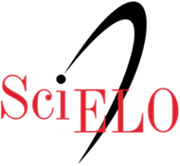<b>Morphological and ultrastructural analysis of various types of banana callus, cv. Prata anã</b> - doi: 10.4025/actasciagron.v34i4.14501
Abstract
This work was carried out to characterise morphologically and ultrastructurally the banana callus, obtained from the scalp method. Genotypes of banana, cv. Prata anã, cultivated in vitro were used to induce meristems at the leaf base; subsequently, structures known as scalps were formed. For ultrastructural analysis, five samples of callus were collected, fixed in Karnovsky solution and analysed by scanning electron microscope (SEM) and transmission electron microscope (TEM). The formation of three types of callus was observed: Type 1 - transparent watery callus, Type 2 - yellow callus with small clusters, Type 3 - yellow callus with large clusters. SEM analysis showed that Type 1 callus cells were elongated and that Type 2 and Type 3 callus cells were isodiametric, which is a characteristic of embryogenic cells. The TEM analysis showed that Type 1 callus cells had thin walls, a large number of small vacuoles and dispersed cytoplasm. The Type 2 callus cells showed dense cytoplasm, large vacuoles and a large amount of mitochondria. The Type 3 callus cells had thick and intercellular spaces. Thus, the Type 2 callus cells had characteristics consistent with embryogenic callus cells.
Downloads
DECLARATION OF ORIGINALITY AND COPYRIGHTS
I Declare that current article is original and has not been submitted for publication, in part or in whole, to any other national or international journal.
The copyrights belong exclusively to the authors. Published content is licensed under Creative Commons Attribution 4.0 (CC BY 4.0) guidelines, which allows sharing (copy and distribution of the material in any medium or format) and adaptation (remix, transform, and build upon the material) for any purpose, even commercially, under the terms of attribution.




















































